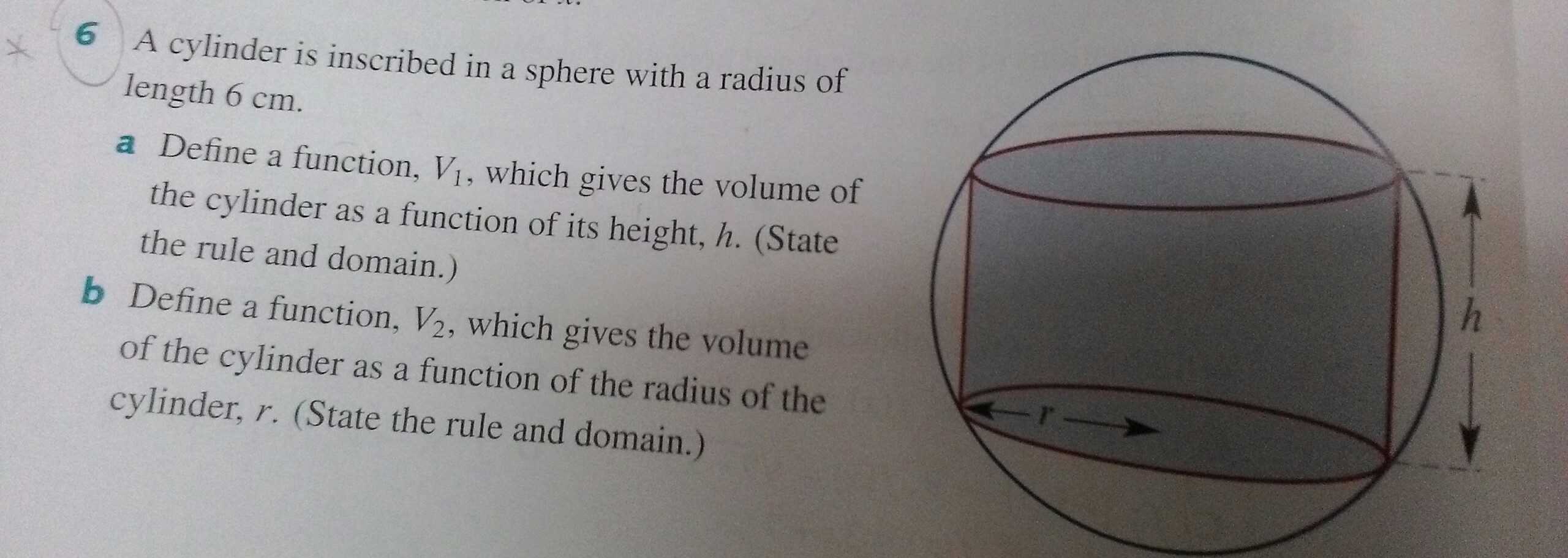What if the volume of a cylinder as a function of it's height/radius? Full question in the description box below.

1 Answer
Explanation:
If we take a vertical slice through the centre of the sphere and cylinder, then it looks like this:

Where
Then the volume of the cylinder is the area of its base, multiplied by the height. That is:
V = h pi r^2
Note that the radius
(2R)^2 = h^2+(2r)^2
That is:
4R^2 = h^2+4r^2
Hence we can write
r = 1/4 sqrt(4R^2-h^2)
h = sqrt(4R^2-4r^2) = 2sqrt(R^2-r^2)
We can substitute these formulae into our prior formula for the volume of the cylinder to find:
V_1(h) = h pi r^2 = h pi (1/4 sqrt(4R^2-h^2))^2 = 1/16 h(4R^2-h^2)
V_2(r) = h pi r^2 = (2sqrt(R^2-r^2)) pi r^2 = 2pir^2 sqrt(R^2-r^2)
Finally, substituting
V_1(h) = 1/16 h(144-h^2)" cm"^3" " forh in [0, 12]
V_2(r) = 2pir^2 sqrt(36-r^2)" cm"^3" " forr in [0, 6]

